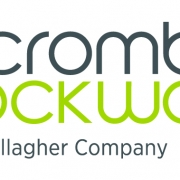Insurance consumers should welcome Fire and Emergency NZ review
The Insurance Council of New Zealand and Internal Affairs Minister, Tracey Martin, applaud government review of current levy funding regime.
 From the ashes of a Fire and Emergency New Zealand (FENZ) restructure has risen significant merger costs that, under the current funding regime are recuperated through a levy imposed on all home, contents, and auto insurance premiums.
From the ashes of a Fire and Emergency New Zealand (FENZ) restructure has risen significant merger costs that, under the current funding regime are recuperated through a levy imposed on all home, contents, and auto insurance premiums.
In March, the Government decided to review the funding system with an eye to seek alternative solutions that are fairer to the wider population and insurance buyers. The move has been overwhelmingly supported by the Insurance Council of New Zealand (ICNZ).
“The current levy is a grossly unfair tax that penalises people who try to do the right thing to protect their assets, lumping them with the cost of running FENZ while also supporting access to emergency services for those who choose not to insure,” said ICNZ Chief Executive, Tim Grafton.
“The Government has made the right call to review how to fund FENZ in a way that is fair to everyone, simple, low cost to administer and lines up with what happens in most other countries,” he continued.
The benefits of the levy are not in dispute, with Internal Affairs Minister Tracey Martin acknowledging the services FENZ provide. “The establishment of FENZ has gone well and New Zealanders are beginning to see the benefits of a modern, unified fire and emergency service,” said Martin. “For example, FENZ has responded admirably to the Nelson/Tasman fire.”
But she, like the insurance industry welcomes the review and potential alternative funding solutions going forward. “FENZ, like the fire service before it, is funded by a levy on property insurance and there are flaws in insurance-based funding: property owners that do not insure are able to ‘freeride’, as they do not pay a levy but still benefit from FENZ’s services; charging people on their insurance increases insurance costs and can reduce the incentive for them to properly insure their properties; and levy collection is complex to administer for insurers, and FENZ’s levy income may become uncertain as the commercial insurance market evolves.”
“The Government considers that there may be better ways to fund such an important organisation,” she concluded.
This article was originally published in Crombie Lockwood’s SURE magazine


